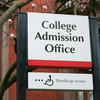 The typical upcoming college freshman asks himself a variety of questions before selecting a university: “What percentage of students get hired right after graduation?,” “How many coeds double major?,” “Does this college have sororities and fraternities?,” and even “What is the school spirit like?”
The typical upcoming college freshman asks himself a variety of questions before selecting a university: “What percentage of students get hired right after graduation?,” “How many coeds double major?,” “Does this college have sororities and fraternities?,” and even “What is the school spirit like?”
Surprisingly, one more question has made the list. Students nowadays are asking “What is the technology like on campus?” before forking over the tuition money.
According to CDW-G’s 2011 21st-Century Campus Report, 87 percent of college students surveyed said they considered their institution’s technology when selecting their college. This sentiment was echoed in CDW-G’s 21st-Century Classroom Report, which looked at educational technology in K-12 and found that 92 percent of current high school students felt that technology is an important consideration when evaluating colleges.
The 21st-Century Campus annual report which was released this summer by CDW Government LLC (CDW-G) – a provider of technology solutions to government, education and healthcare customers – surveyed more than 1,200 college students, faculty, IT staff and administrators about the role of technology in higher education.
Some key findings include the following:
- While 98 percent of college administrators say mastering technology skills will improve their students’ educational and career opportunities, only 22 percent say that using technology to enhance the learning process is one of their top priorities
- Only 12 percent of administrators want to improve and enhance campus IT
- Twenty-three percent of IT staff reported that their institution’s technology is cutting edge, up from just nine percent in 2010
- Students are using technology more often while in class with 31 percent using technology as a learning tool every day – up from 19 percent in 2010
Perhaps the most striking finding, however, was the first result mentioned above which highlights the disconnect between administrators’ priorities and the importance of campus technology for students and faculty.
So why is there such a disconnect? Because of the current economic state. While administrators agree that students mastering technology skills is imperative for their future employment, it is at the bottom of the priority list since administrators are more focused on attracting and retaining students, according to the survey.
“Administrators have to continue to attract and retain students, even amid a tough economic landscape and harsh budget cuts in higher education,” said Andy Lausch, vice president for higher education at CDW-G in a statement. “Technology can be the differentiator for administrators looking to meet current students’ expectations and capture the attention of future students.”
This statistic touches upon one of the greatest issues today: how do you propel your school forward technologically while having to slash budgets?
When I was a newspaper reporter covering the primary and secondary education world in Connecticut, I would witness this struggle firsthand every week at Board of Education meetings. After all, how do you bring SMART Boards, iPads and eReaders into class without causing a huge spike in tax payer spending? And, at the higher education level, how do you make classrooms wireless and bring in leading edge technology without making tuition costs soar even more?
Simply put, there is a price for technology and right now schools may not have much negotiating power.
What can schools do in the meantime?
Find donors and large corporations who are standing ready to bring technology to the schools. Earlier this summer I wrote about how EverFi’s Financial Literacy Platform for High Schools, a platform that is integrated into the classroom to teach kids the importance of the Stock Market, credit scores and mortgages all through the use of technology, is taking the country by storm. Before the program makes its way into the classroom, corporations come forward to fund the software so that the program can be introduced to a school free of cost. Once the school agrees to participate, the software is then integrated into school lessons.
This is just one example of how schools and corporations can team to weather these tough economic times and still bring technology innovation to schools.













Leave a comment